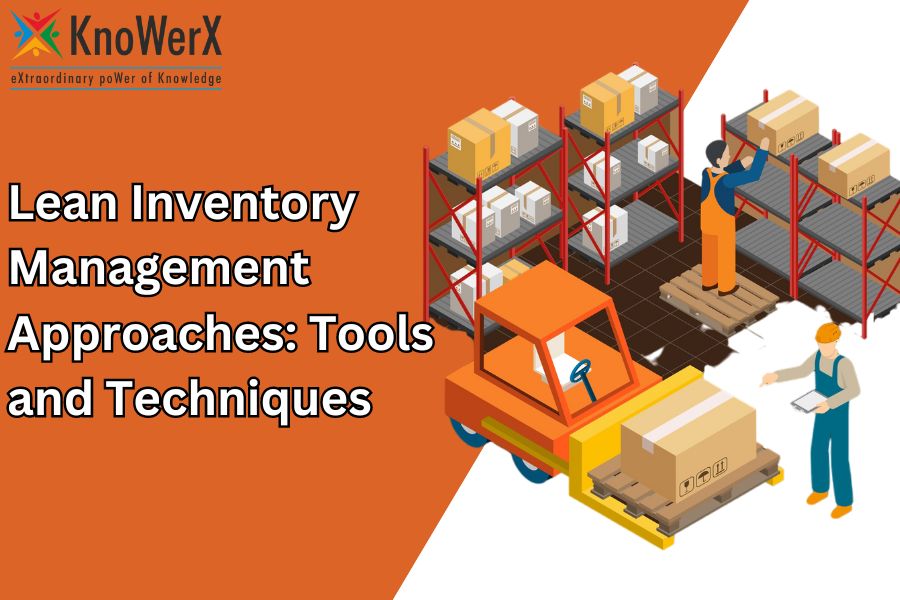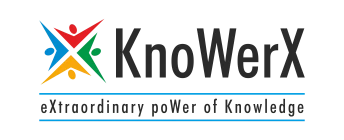Lean Inventory Management: Tools, Techniques & Benefits | KnoWerX
In today’s competitive market, managing inventory efficiently is crucial for businesses aiming to minimize costs and maximize productivity. Lean Inventory Management offers a streamlined approach to handling stock, emphasizing the reduction of waste and improvement of operational efficiency. By adopting lean practices, companies can ensure they have just the right amount of inventory to meet customer demand without overstocking or running into shortages.
Understanding Lean Inventory Management

Lean Inventory Management is a systematic approach that focuses on eliminating waste and optimizing processes within the supply chain. This methodology, rooted in the principles of Lean Manufacturing, aims to create more value with fewer resources. Key benefits of implementing lean inventory practices include reduced holding costs, improved cash flow, and enhanced customer satisfaction due to more reliable product availability.
Tools for Lean Inventory Management
Several tools can be employed to achieve lean inventory management. Among the most effective are the Kanban System, Just-In-Time (JIT) Inventory, and the 5S Methodology.
- Kanban System
- The Kanban System is a visual workflow management tool that uses cards or signals to indicate when new inventory is needed. This system helps prevent overproduction and ensures that inventory levels are maintained at optimal levels. For example, Toyota’s production system effectively uses Kanban to manage parts and components, leading to significant efficiency gains.
- Just-In-Time (JIT) Inventory
- JIT Inventory is a strategy where materials and products are produced or acquired only as needed for immediate use. This approach minimizes inventory holding costs and reduces waste. Companies like Dell have successfully implemented JIT to streamline their production processes, ensuring components arrive just in time for assembly.
- 5S Methodology
- The 5S Methodology is a workplace organization technique that stands for Sort, Set in order, Shine, Standardize, and Sustain. This method helps create an organized and efficient work environment, reducing the time spent searching for materials and minimizing excess inventory. A clean and well-organized warehouse facilitates better inventory control and enhances overall productivity.
Techniques for Lean Inventory Management
Beyond tools, certain techniques can further enhance lean inventory management. Value Stream Mapping (VSM), Continuous Improvement (Kaizen), and Pull Systems are among the most effective techniques.
- Value Stream Mapping (VSM)
- VSM involves mapping out the entire production process to identify areas of waste and opportunities for improvement. By visualizing the flow of materials and information, businesses can streamline operations and reduce lead times. Implementing VSM in inventory management helps pinpoint bottlenecks and areas where excess inventory accumulates, allowing for more efficient processes.
- Continuous Improvement (Kaizen)
- Kaizen is a philosophy that emphasizes ongoing, incremental improvements in all aspects of the business. In the context of inventory management, Kaizen encourages employees to continually seek ways to reduce waste and enhance efficiency. By fostering a culture of continuous improvement, businesses can adapt to changing market conditions and maintain lean inventory levels.
- Pull Systems
- Pull Systems operates on the principle of producing or procuring inventory in response to actual demand rather than forecasted demand. This approach reduces the risk of overproduction and excess inventory. Implementing pull systems in inventory management ensures that resources are used more efficiently, and products are available when needed, enhancing customer satisfaction.
Challenges in Lean Inventory Management
While lean inventory management offers numerous benefits, it is not without challenges. Common obstacles include resistance to change, lack of employee training, and difficulties in maintaining consistent supplier relationships. However, these challenges can be overcome through proper planning, employee engagement, and collaboration with suppliers. Successful case studies, such as those of companies like Toyota and Dell, demonstrate that with commitment and strategic implementation, lean practices can lead to significant improvements in inventory management.
FAQs: Frequently Asked Questions
What is Lean Inventory Management?
Lean Inventory Management is a systematic approach that focuses on minimizing waste and optimizing processes within the supply chain. It aims to maintain just the right amount of inventory needed to meet customer demand without overstocking or facing shortages.
What are the key benefits of Lean Inventory Management?
The key benefits include reduced holding costs, improved cash flow, enhanced customer satisfaction due to reliable product availability, and increased operational efficiency by eliminating waste.
What tools are commonly used in Lean Inventory Management?
Common tools include the Kanban System, which uses visual signals to manage inventory levels; Just-In-Time (JIT) Inventory, where materials are produced or acquired only as needed; and the 5S Methodology, which organizes the workspace for better inventory control.
How can KnoWerX help in mastering Lean Inventory Management principles?
KnoWerX offers the Certified Inventory Management Officer (CIMO) Course, providing comprehensive training in effective inventory management strategies, including tools and techniques like Kanban, JIT, VSM, and Kaizen.
End Notes

At KnoWerX, a premier supply chain management institute, we understand the critical importance of Lean Inventory Management in today’s business landscape. Lean Inventory Management equips businesses with the tools and techniques needed to reduce waste, optimize stock levels, and enhance operational efficiency. By adopting practices such as Kanban, JIT, and the 5S Methodology, and employing techniques like VSM, Kaizen, and Pull Systems, companies can achieve a leaner, more responsive inventory system.
Embracing lean inventory management not only improves the bottom line but also ensures a more agile and customer-focused operation. For those looking to master these principles, KnoWerX offers the CIMO (Certified Inventory Management Officer) Course, designed to provide comprehensive training in effective inventory management strategies.
Image Reference: Freepik
Disclaimer: All trademarks, logos, and brand names are the property of their respective owners. All company, product, and service names used in this website are for identification purposes only. Use of these names, trademarks, and brands does not imply endorsement.



